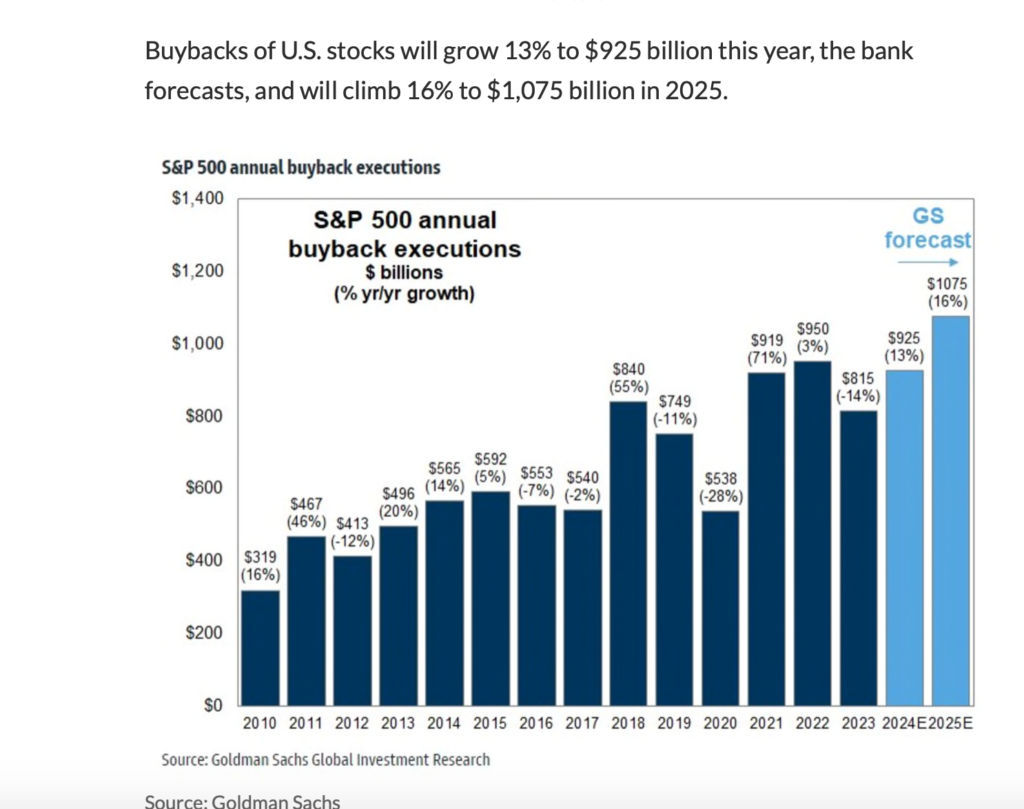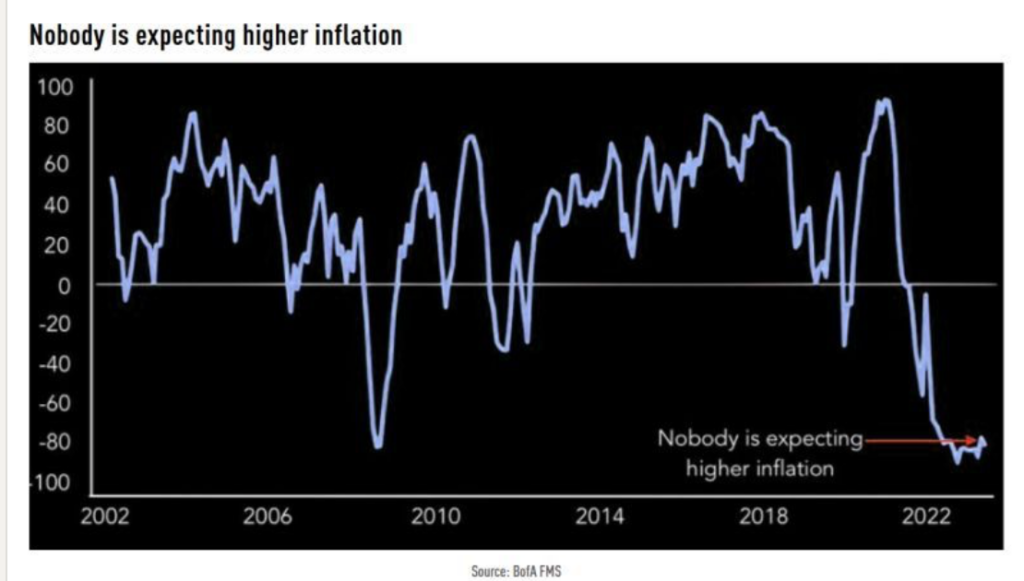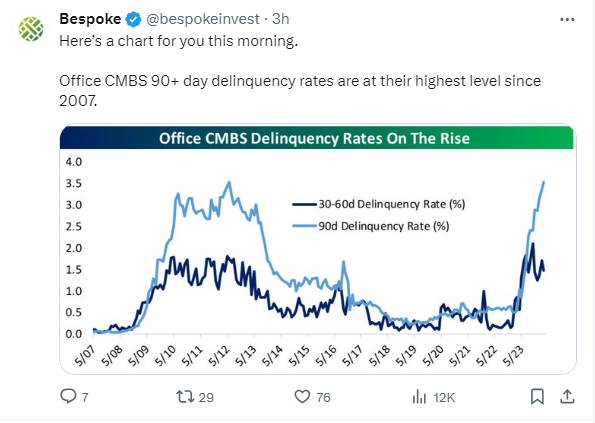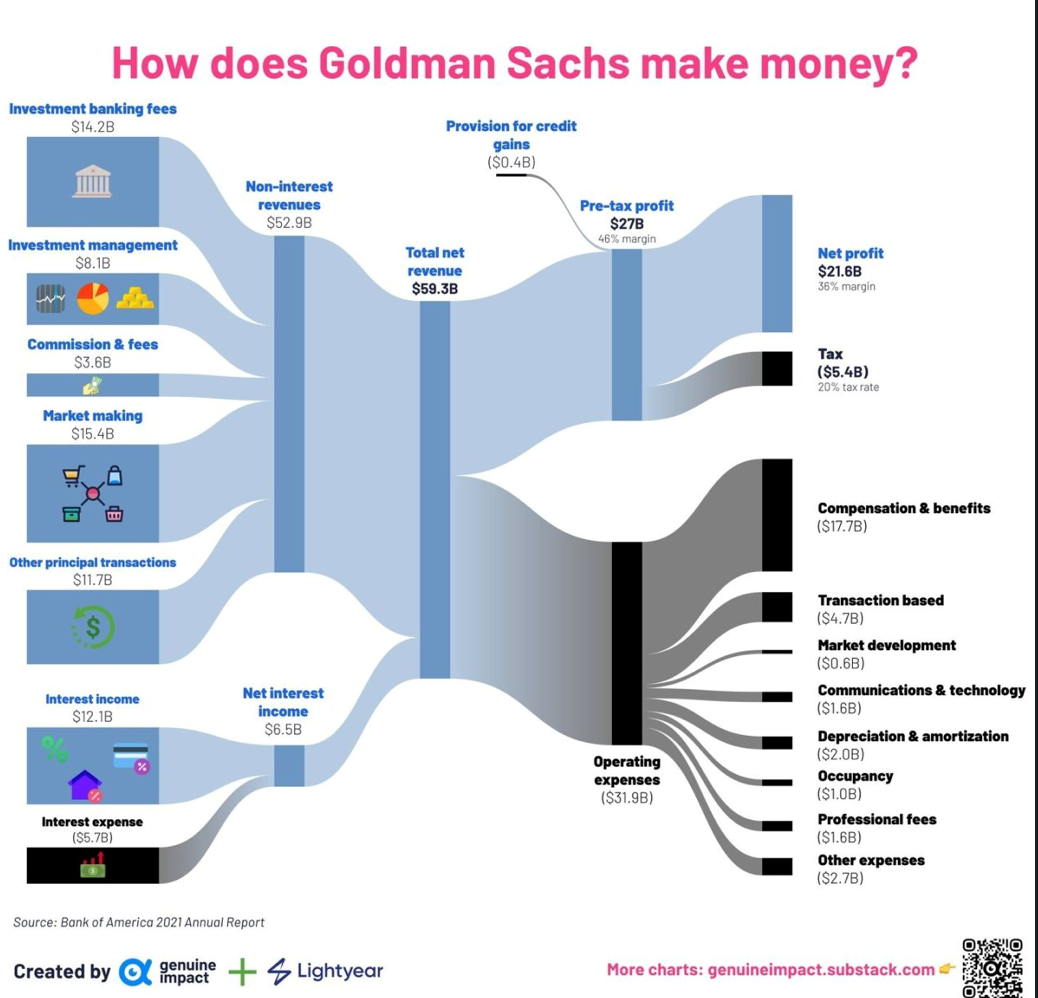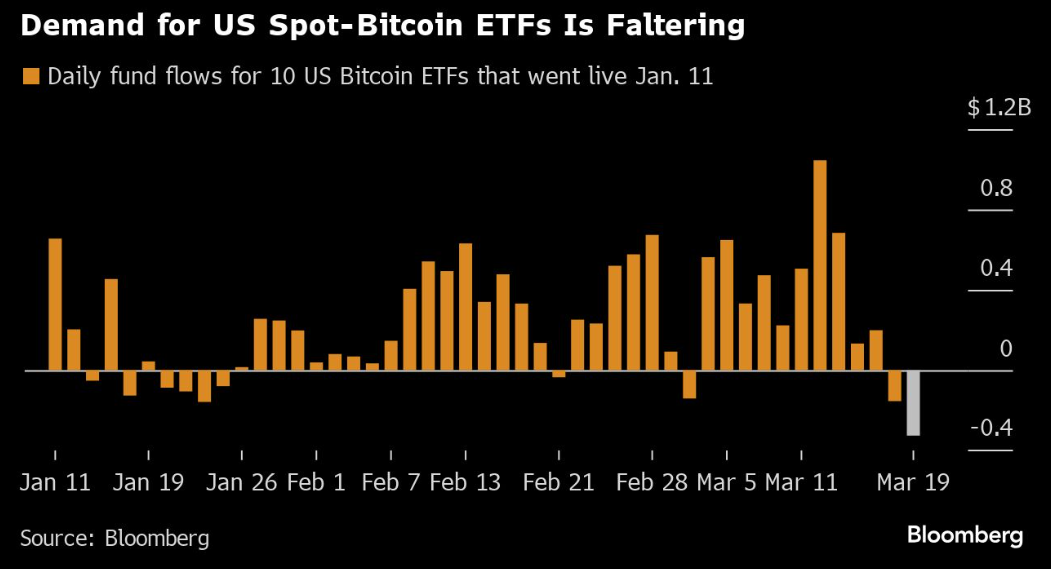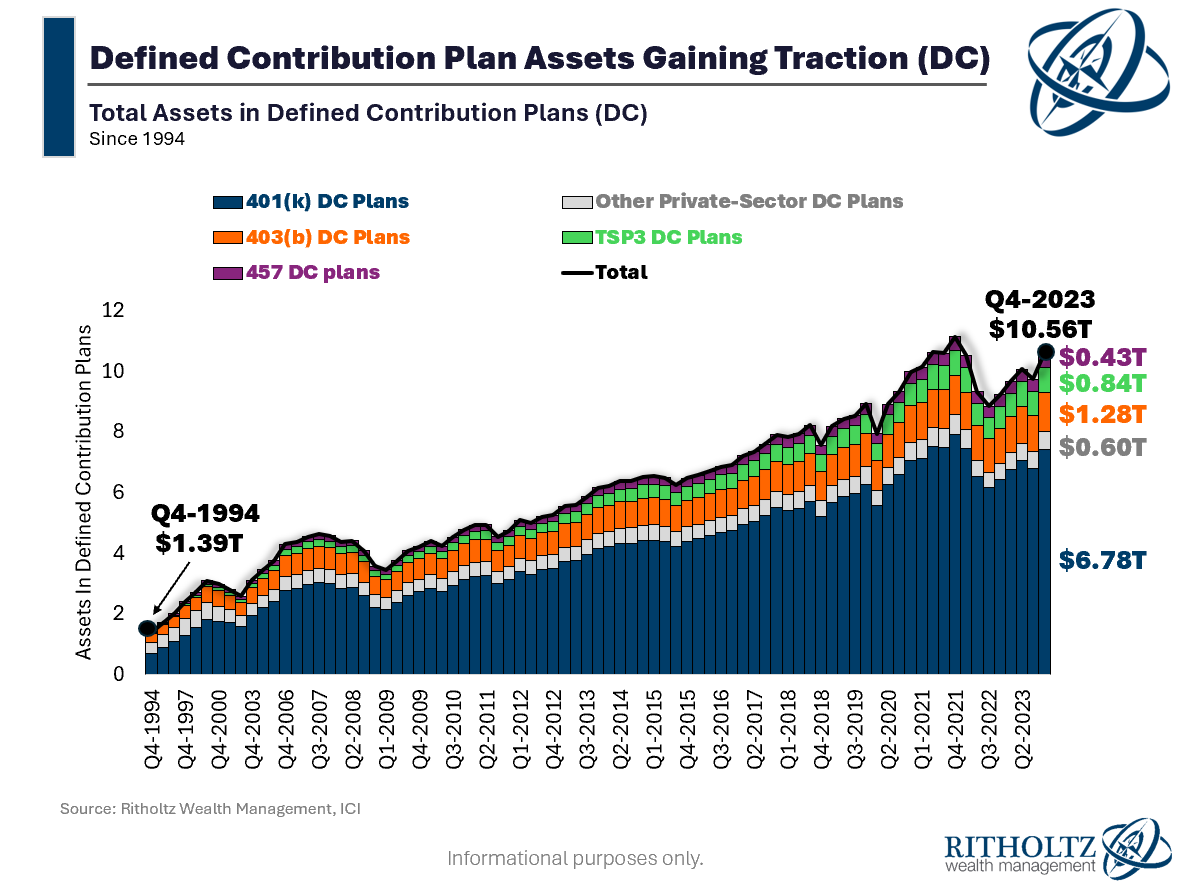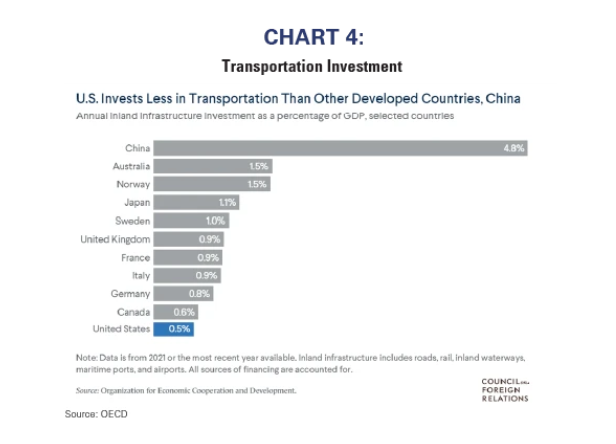1. Annual IPO Activity 2000-2024
Dorsey Wright Will IPO Market Launch with Reddit?

https://www.nasdaq.com/solutions/nasdaq-dorsey-wright
2. Days Since 2% Correction
Michael Batnick Irrelevant Investor

https://theirrelevantinvestor.com/
3. Three Events That Cause Corrections
Marketwatch By Joseph Adinolfi
PIPER SANDLER-The team found that, without exception, each of these selloffs has been primarily driven by one of three things: rising unemployment, rising bond yields or some kind of global exogenous shock. Sometimes, it has been a combination, as was the case during the two equity-market corrections that occurred during 1980. So, which is most likely to trigger the next 10% correction? According to Kantrowitz and his team, rising yields are the biggest threat to tranquil markets. Rising yields also caused the most recent correction, which ended on Oct. 27 with the S&P 500 down 10.3%.
Over the past two years, equities’ sensitivity to higher yields has reached near-record levels last seen near the peak of the dot-com bubble on a rolling 26-week basis. This suggests stocks could still react negatively if long-term bond yields continue to climb, even though equities have been largely immune to the rebound in yields since the start of 2024.
“We’ve written a lot about how rate-sensitive equity markets are today. As such, the biggest risk that we see to equities in 2024 would be a rise in rates,” Kantrowitz and his team wrote.
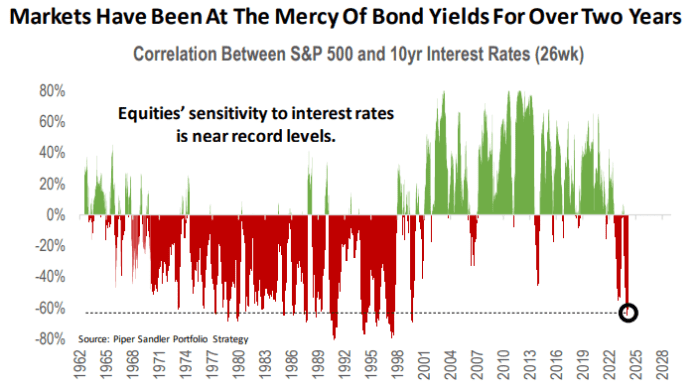
4. Laggard Sector Big Pharma-Pipeline of Drugs
Rich Wolf-Capital Group

5. Apple Stock -14% from Highs
4 lower highs..see if it breaks Nov. 23 levels.
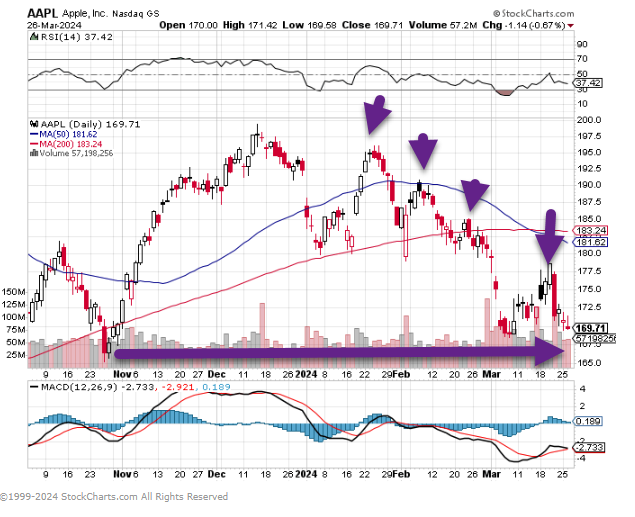
6. It’s a Trader Nation
Zerohedge-Stock Holding Periods About to Make New Lows.

https://www.zerohedge.com/markets/technical-measures-and-valuations-does-any-it-matter
7. Sales Growth Projections from Tech Themes
Global X Research

https://www.globalxetfs.com/the-next-big-theme-march-2024/
8. ChatGPT Use Update
Pew Research
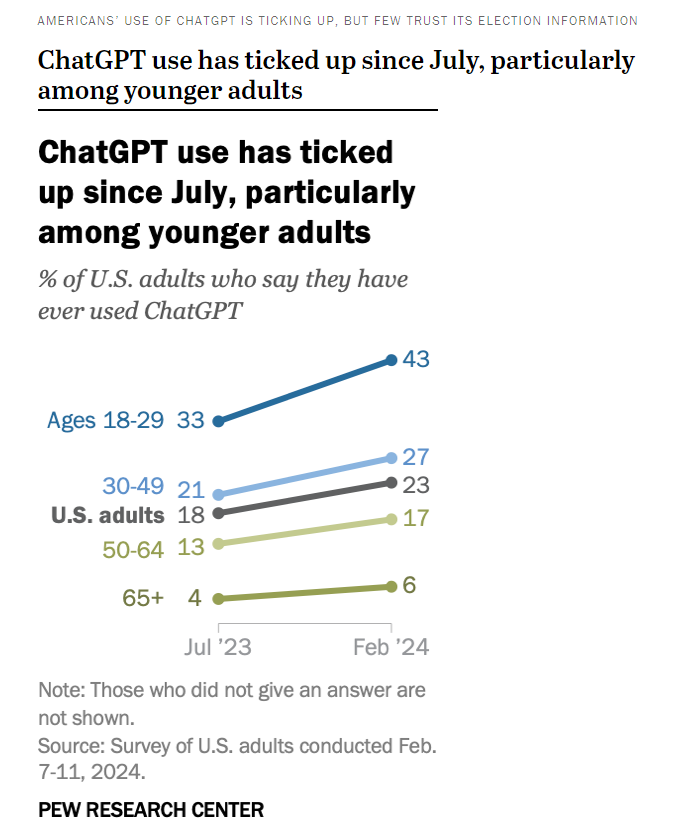
ChatGPT use has ticked up since July, particularly among younger adults
9. Swiss Watches: Market Share by Brand in 2023
Visual Capitalist By Marcus Lu
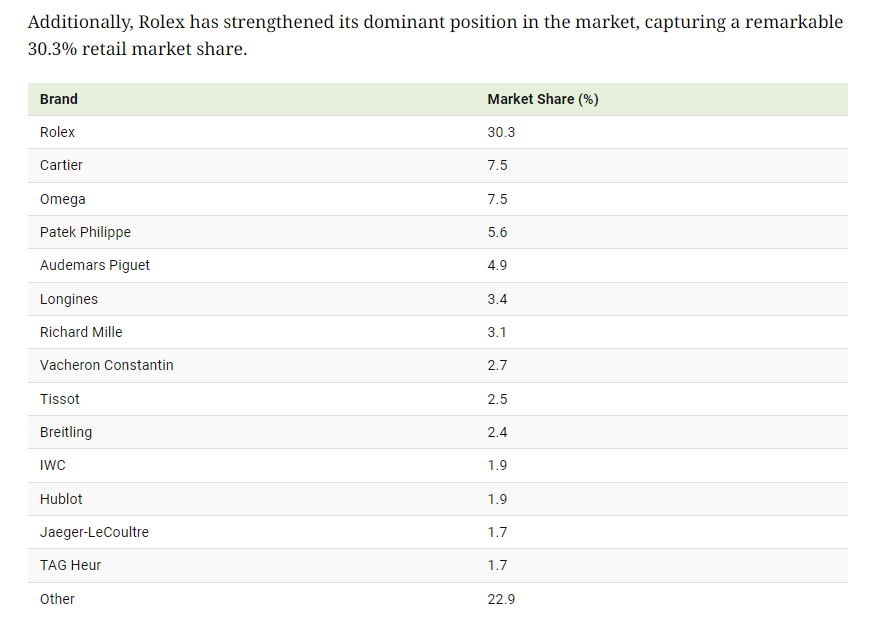
https://www.visualcapitalist.com/swiss-watches-market-share-by-brand-in-2023/
10. Execution Shortcuts on the Path to Business and Career Success-INC.
EXPERT OPINION BY MARTIN ZWILLING, FOUNDER AND CEO, STARTUP PROFESSIONALS @STARTUPPRO
Businesses always seem to take longer to succeed than a new owner expects. Seth Godin once said that overnight success in startups takes about six years, and Seth is an optimist. Thus we all look for shortcuts. Execution shortcuts would be hidden strategies to achieve the endgame sooner, without losing 40 to 60 percent of the financial potential along the way.
The short answer is that there is no magic. But there is consensus from the experts that human dynamics are more the key and the problem, rather than any particular business strategy or tactic. The classic book, The Execution Shortcut, by Jeroen De Flander, a well-respected writer and speaker on business strategy execution, offers some good insights and examples.
If you aspire to get a better return from your strategy, De Flander and I agree that you must learn to position your strategy to capture the head, heart, and hands of your constituents. They need a full sense of awareness of where you are going, to care deeply about it, and to maintain the highest energy to drive it. Here are 10 ways he offers for a professional to enhance his/her strategies:
- Facilitate small choices that get you closer to the finish line. Provide prioritization guidelines to align day-to-day choices with the big choices. To make the right big choice, everyone needs to know whom to focus on, and how to offer unique value to constituents in the chosen segment. When to say no is also a critical part of any strategy.
- Keep the big choice clearly visible in all your actions and communications. People shorten and package messages all the time, causing message distortion that can hide the core of your big idea. So don’t pass messages down the line. Talk directly to every key constituency often, and make your messages as sticky as possible.
- Draw a finish line so key people know the real objective. Capture the core of your strategy and show everyone in an inspiring way what strategy success looks like. Everyone works harder when they know who’s winning and the distance to the end. The right finish line also motivates and gives purpose to those traveling the execution road.
- Define lead indicators, and regularly re-measure distance to the finish line. Everyone needs a limited set of lead indicators to provide feedback and allow recalibration based on things learned along the way. Remove old signposts to prevent confusion, and work to prevent information overload.
- Share strategy stories for stickiness and heart connections. Story wrappers add context and emotion to the strategy to make people feel and remember the core message.People want to see what kind of small choices they have to make to contribute to the big choice.
- Climb the micro-commitment ladder with full engagement. Don’t settle for small commitments on big things. Go after big commitments on small things. The highest rung on the commitment ladder is “Yes, I will get it done no matter what.” This is the only level that represents full ownership of the task, and execution responsibility has really shifted.
- Go beyond self-interest to boost belief in others. The key to success is belief. Celebrating small successes along the road makes people believe they can achieve big success at the finish line. Success is a self-fulfilling prophecy, causing people to dig deeper, recover faster, and keep going longer.
- Constantly tackle complexity as your business grows.Complexity is the biggest performance killer in organizations. Embrace simplicity to create the most productive working environment. Be constantly on the lookout for best practices and tools to improve your strategy execution.
- Experience the power of habits to automate decisions.Each overt decision we make demands mental strength, and when there are too many decisions to take, our reserves run out. Remember how draining your first day on a new job was. Quickly the small decisions become habits. Group habits become your company culture.
- Find your seven-day rhythm. A daily rhythm or schedule creates habits faster but is unrealistic in most business environments. A seven-day rhythm provides regular repetitions and follows a more normal business flow. Be sure to connect decision horizons and find a spot for strategy in everyone’s weekly agenda.
We have all seen businesses and new ventures with great ideas that never seem to reach the finish line, while others with more mundane solutions seem to take some hidden path to success. In my experience, like that of De Flander, the difference is almost always related to the leader and their execution strategy, more so than to the solution provided.
The next time you talk to a potential client or investor, spend more time on your execution dynamics and less time on the product pitch. I suspect it will be a shortcut to at least the initial phase of your new venture, and probably long-term business success as well.
Now accepting applications for Inc.’s Best Workplace awards. Apply by February 16 for your chance to be featured!
The opinions expressed here by Inc.com columnists are their own, not those of Inc.com.
10 Execution Shortcuts on the Path to Business and Career Success | Inc.com























